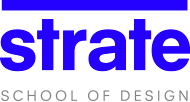The Things That Comprise the Internet of Things (IoT)
The Internet of Things (IoT) is literally an internet of things; a system of smart devices that intake data and communicate with each other using the internet. The amount of, and type of, devices connected to the Internet of Things is growing exponentially. By the end of 2019, Gartner predicts that there will be 14.2 billion connected things. That number will jump to 25 billion by 2021. There are many technologies used in the Internet of Things – in fact, almost everything being produced today is being made with sensors and barcodes that allow it to be part of the system of devices. Technologies for the IoT can include anything found in smart homes from smart appliances to voice assistants, smart city infrastructures like smart signs and traffic lights, IoT applications in healthcare, to barcodes on manufacturing materials that haven't yet been turned into the thing they are meant to be.
The Internet of Things is based on what technology?
The IoT is based on sensor technology that collects data and then transmits that data via the internet, to the Cloud. An IoT platform embraces the dumped data, and then Artificial Intelligence and Machine Learning technologies clean up the data, sort it and analyze it before redistributing it to other devices or human-machine interfaces for human consumption specific to the purpose. The data is turned into real-time, valuable information that enhances the human experience, creating more efficient and convenient operational means. So, sensors, internet, cloud, artificial intelligence, machine learning, and interface software all are part of the Internet of Things information lifecycle, and IoT devices are becoming part of our daily lives.
More devices are constantly being added to the IoT system. The Internet of Things is overwhelmingly altering the way individuals and organizations interact with technology. Just as significant, the principles for human and IoT interactions, especially those without screens and keyboards are still being considered. How human to IoT interactions develop will go a long way in determining the role IoT plays in both individual and business functions.
5 exampes of IoT's latest technology
1) Edge Computing
Edge computing brings computing power and memory closer to the device (it doesn’t need to be transmitted to far away data centers). IoT devices' power will increase, allowing for greater localized data processing and Artificial Intelligence capabilities. Increased power translates into data transfer volume reductions to the Cloud – ultimately providing more agility and flexibility for users and businesses. Also, less data influx is better for data privacy. Edge computing will significantly affect industries that rely on immediate action based on complex real-time data analysis like manufacturing and policing.
2) Customizable shopping experiences
Using IoT and Facial Recognition Technology (FRT) specifically, stores can recreate the old-timey feeling of going into a store and being greeted personally by an employee who knows you and can make suggestions based on interactions with you. FRT is the future of retail, where retailers can offer customized experiences by using FRT and machine learning. The IoT future for shopping at physical retailers is that your face will be tracked as you shop, and you can exit the store with your purchases because you paid with your face. Mastercard is already developing selfie-pay – this is not a far-flung IoT reality, the technologies are already in development or are being introduced in limited applications.
3) Smart Stores
Stores are connecting to IoT and getting progressively smarter. By using radio frequency identification (RFID) tags, stores can gain critical insights into inventory. IoT smart lighting can also inform stores about how long customers remain in a particular aisle, and visual aids and sensors tell stores how much, or little, time consumers spend interacting with products. This knowledge helps with store layout, customized shopping experiences and managing inventory.
4) Help Desk and Automated Customer Service
IoT promises to report problems before you are aware there are problems, which means no more sitting on hold waiting for service. Customer relationship management (CRM) software will rely more heavily on IoT. Instead of a user having a problem and contacting a customer assistance service (and then waiting until an agent is free), an IoT device will notify an agent when it senses a consumer is experiencing difficulties. Devices included in this IoT CRM service could be appliance-style products (ex. fridges) or utilities (power outages, cable/internet interruptions). IoT devices can alert a service desk's software before the customer even knows to report it.
5) 5G Network
The implementation of the 5G network has been in the news a great deal – especially between various countries and the provider Huawei. There is much hype surrounding 5G, and a lot of it has to do the IoT. Users won't notice much change when 5G is first deployed and adopted. However, as IoT continuous its rapid spread the 5G Network's higher speeds and lower latency will better support IoT and the increase of connected devices, as well as allow for amazing augmented reality and virtual reality experiences, helping to further the idea of a smart and connected home.
The IoT promises better sleep and fitness monitors, healthcare, home efficiencies, industrial processes, and environmental monitoring. IoT will revolutionize every aspect of how we interact and communicate with technology and the physical world. IoT is still in its infancy, and so the IoT technologies yet to be created are only as limited as the human imagination.
